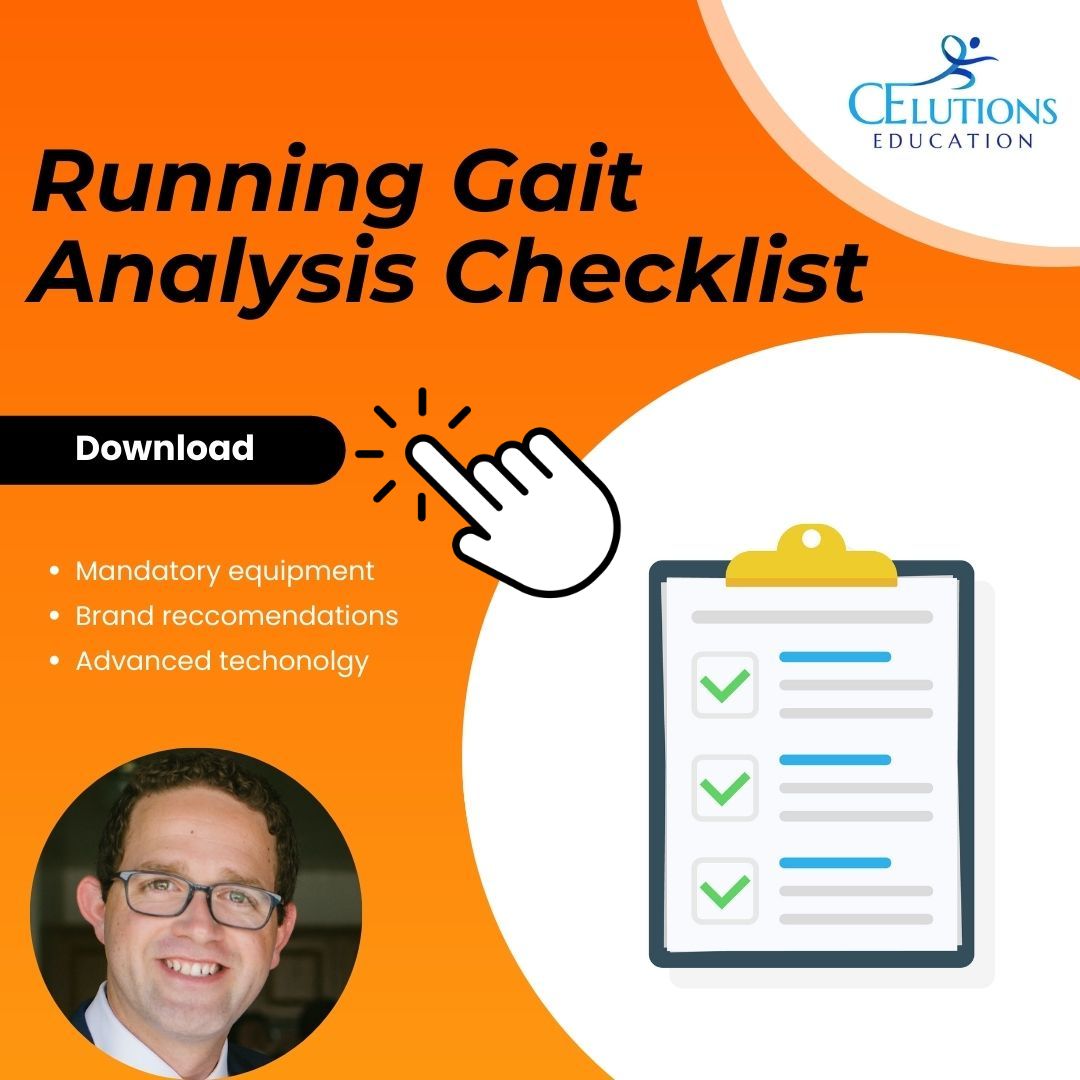3 Reasons To Not Perform An Observational Gait Analysis
May 04, 2023
Many gait experts have seen some very motivated patients in their clinical experience. In most cases those patients will do almost anything to return to walking or running. But as gait experts it’s important for us to recognize when a gait analysis is not warranted and potentially detrimental to the patient's health. Here are 3 reasons to not perform an observational gait analysis.
Medical Complications To A Running Gait Analysis
The first question we should ask ourselves when prescribing an observational gait analysis to a patient is whether they are medically safe to walk or run. This is why it’s important to do a thorough medical history review with the patient prior to their analysis. Complications that could potentially prevent a patient from participating in walking or running include cardiovascular complications, diabetes, symptoms of dizziness, blurred or altered vision and/or prescription medications to name a few. Cardiovascular complications can especially be compounded during a gait analysis with not only risking extremely high heart rate and blood pressure but potentially putting the patient at risk for heart attack or stroke. Additionally, the patient may not be able to gauge their rate of perceived exertion (RPE) with specific cardiovascular medications like beta blockers and may develop a cough while taking an ACE inhibitor. Consider working with a patient’s primary care physician, cardiologist or pharmacist to help clear them for a gait analysis if you are concerned for their cardiovascular health. Lastly, an uncontrolled diabetic patient poses a risk to medical complications if their blood sugar levels are too low during a gait analysis. Checking with the patient to make sure they have been continually controlling their diabetes is important to make sure they are safe while walking or running. Pay extra attention to patients that are newly taking drugs such as Metformin or Bromocriptine as it may take patients several months to adjust to their medication.
Musculoskeletal Injuries To Contraindicate A Gait Analysis
Musculoskeletal injuries can inherently be a contraindication to gait analysis. While it’s obvious patients shouldn’t have their gait assessed while suffering from a significant bone fracture, torn tendon or ligament and neuropathy in the extremities there are other musculoskeletal injuries that are unclear as to whether a patient is appropriate for a gait analysis. With musculoskeletal injuries that are safe to run or walk on there are two approaches to gait analysis, either wait until that patient has resolved their injury or perform a gait analysis without worsening symptoms. The injured patient can provide helpful diagnostic insight to their running form, mechanism of injury and biomechanical compensations during a gait analysis. According to the Cleveland Clinic this has become a more popular approach for clinicians when treating and resolving running injuries for patients. If the practitioner decides to wait until the patient no longer has symptoms the gait analysis will provide an unadulterated view of biomechanics and can be used to help avoid future injuries and improve gait patterns. More commonly we see practitioners performing an observational gait analysis on injured patients who are appropriate to walk or run short distances to gain valuable insight on how to resolve their injury and prevent future causes of re-injury.
The Runner’s Current Training Schedule Is Not Appropriate
While systemic and musculoskeletal complications might prevent a patient from being appropriate for a gait analysis there are additional factors in patient training schedules, running routines and/or personal goals that affect their eligibility for a gait analysis. Some contraindications to a gait analysis include patients that will be entering a race in the near future, high mileage athletes and runners that train at a high speed. It is essential that clinicians use their clinical reasoning to determine who is appropriate for a gait analysis as these contraindications can often put a patient at much higher risk for injury. While this is a topic that needs more research, in my practice I do not perform any running gait analyses on patients with a race <30 days away, training over 75 miles per week and running at a sub 7 minute mile pace.
Watch on YouTube:
How To Assess Whether A Patient Is Ready To Walk Or Run?
It can be a challenging clinical decision to clear a patient to walk or run. While there isn’t one magical test that will answer whether the patient will become injured or re-injured, several tests and measures can help aid in the decision to return a patient to walking or running. Many leading academic institutions such as UCSF and USC are adopting several questionnaires and tests to help determine whether a patient is safe to walk or run. Here are several tools with links used to assess a patient's walking and running readiness.
- Functional Movement Screen (FMS)
- PAR-Q
- Single Leg Balance Test
- Lateral Step Down Test
- Calf Raise Test To Fatigue
- Drop Jump Test
How To Become More Confident In Your Gait Analysis
Deciding whether a patient is eligible for a gait analysis can be challenging. On top of that, performing a gait analysis can be intimidating for many clinicians. If you are interested in learning more about providing a gait analysis and starting your own gait analysis clinic check out our continuing education course “The Essentials of Running Gait Analysis”. In the course you will learn about contraindications for patients participating in a gait analysis and how to implement a gait analysis during a patient’s rehabilitation. Lastly, if you have questions about this content or the course feel free to reach out to us to discuss and we will personally respond to your questions.
Listen to the podcast!
If you haven’t done so already grab the “24 Hour Gait Analysis Checklist” and start your own running gait analysis clinic.
References:
https://www.ncbi.nlm.nih.gov/pmc/articles/PMC4469466/
https://journals.lww.com/nsca-jscr/fulltext/2015/10000/functional_movement_screen_for_predicting_running.17.aspx
https://pubmed.ncbi.nlm.nih.gov/8862965/#:~:text=Abstract,inhibitor%20has%20to%20be%20discontinued.
https://www.goodrx.com/metformin/how-long-it-takes-metformin-work


